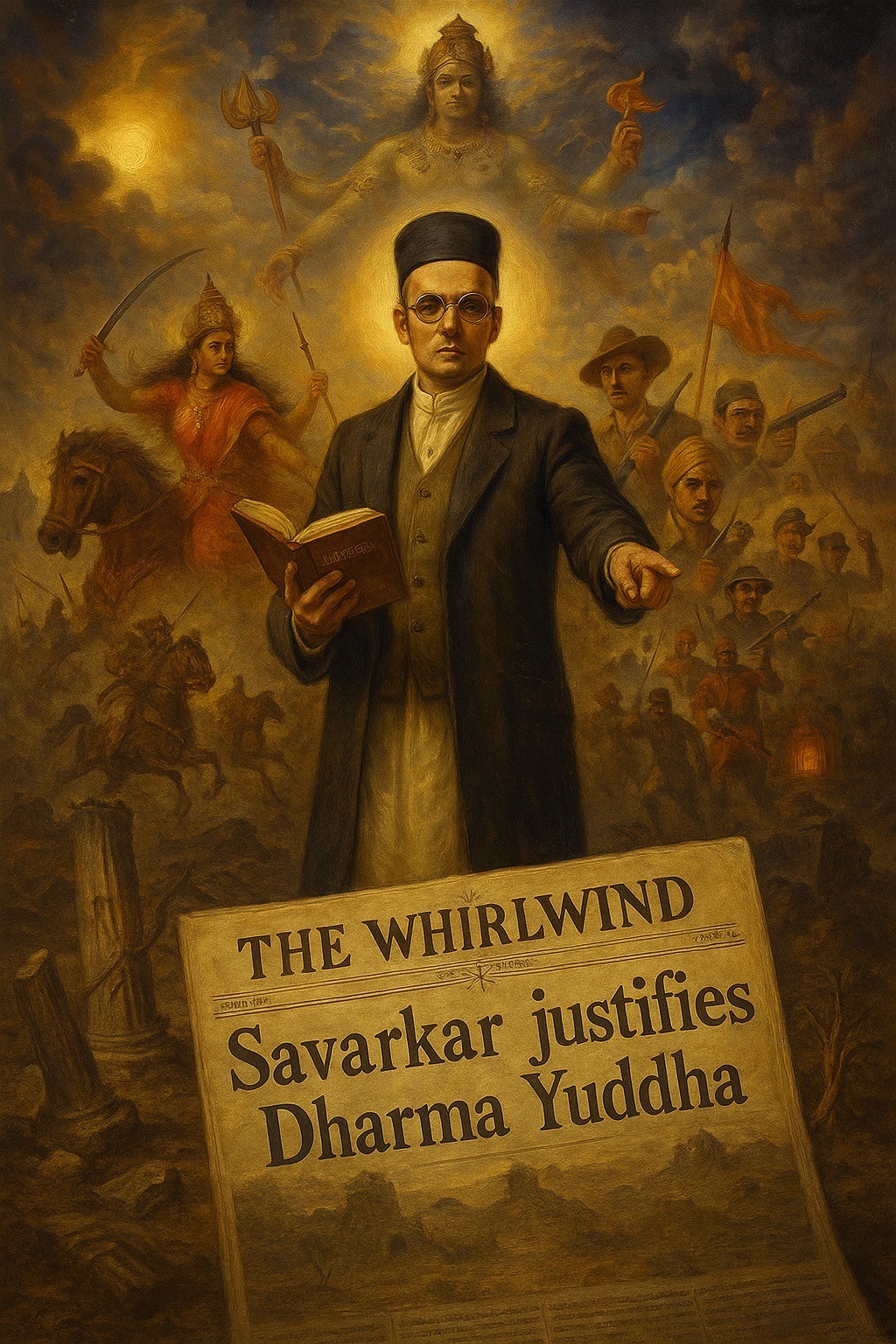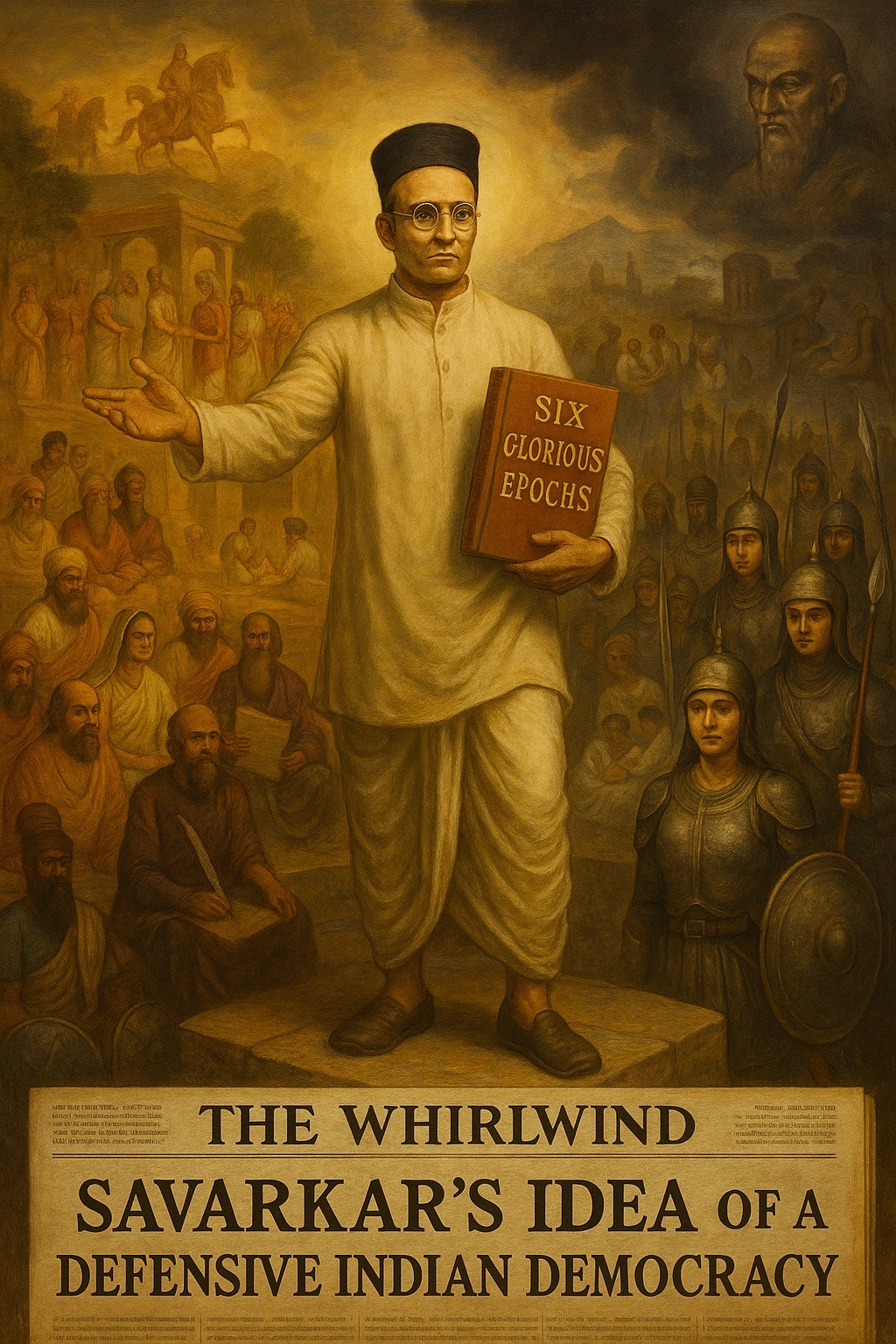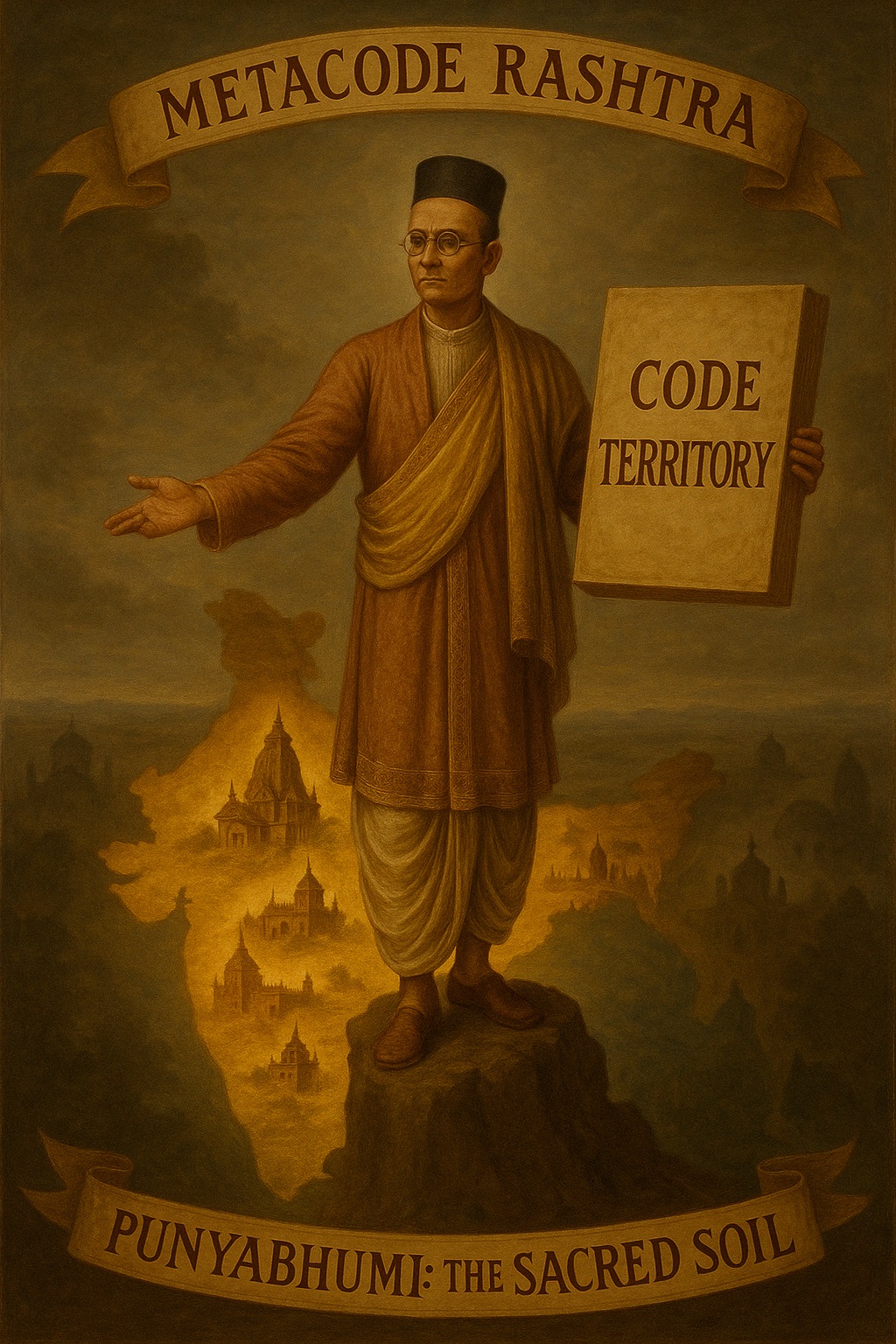Tag: Buddhism
-
Political Dimension of Hindutva, Part 12 Introduction – Savarkar’s Radical Philosophy of Resistance Few statements in modern Indian political thought are as provocative as Vinayak Damodar (Veer) Savarkar’s declaration that relative non-violence is a virtue, absolute non-violence a crime. This concise yet explosive maxim captures the essence of Savarkar’s departure from the dominant ‘Gandhian ethos’…
-
Political Dimension of Hindutva, Part 11 The idea of a “holy war,” known as Dharma Yuddha, against the enemies of Hindutva – particularly non-Hindu occupiers of the land – was a fundamental principle shaping Vinayak Damodar (Veer) Savarkar from his early youth. He derived this concept from the Bhagavad Gita, which speaks of the divine…
-
Political Dimension of Hindutva, Part 8 The political ideas of Vinayak (Veer) Damodar Savarkar cannot be clearly assigned to a specific model of governance. However, with the transformation of British India into the independent Indian Union, democratic concepts increasingly became the focus of his thinking. In his final work, Six Glorious Epochs of Indian History,…
-
Political Dimension of Hindutva, Part 6 The Concept of “Responsive Resistance” Vinayak Damodar Savarkar was deeply influenced by the idea of “Responsive Resistance,” a term coined by Bal Gangadhar Tilak. This concept proposed that Indian cooperation with British colonial rule should be directly proportional to the level of political reforms granted by the British. More…
-
Savarkar’s coding of Hindutva; Metacode Rashtra, Part 4; Code Territory (3/6) The concept of Punyabhumi, or “sacred land”, is central to Vinayak Damodar Savarkar’s definition of the Hindu Rashtra. While he acknowledges the geographical and territorial aspect of the nation (Pitribhu), he further elevates it by embedding a religious dimension, defining it as a “sacred…






